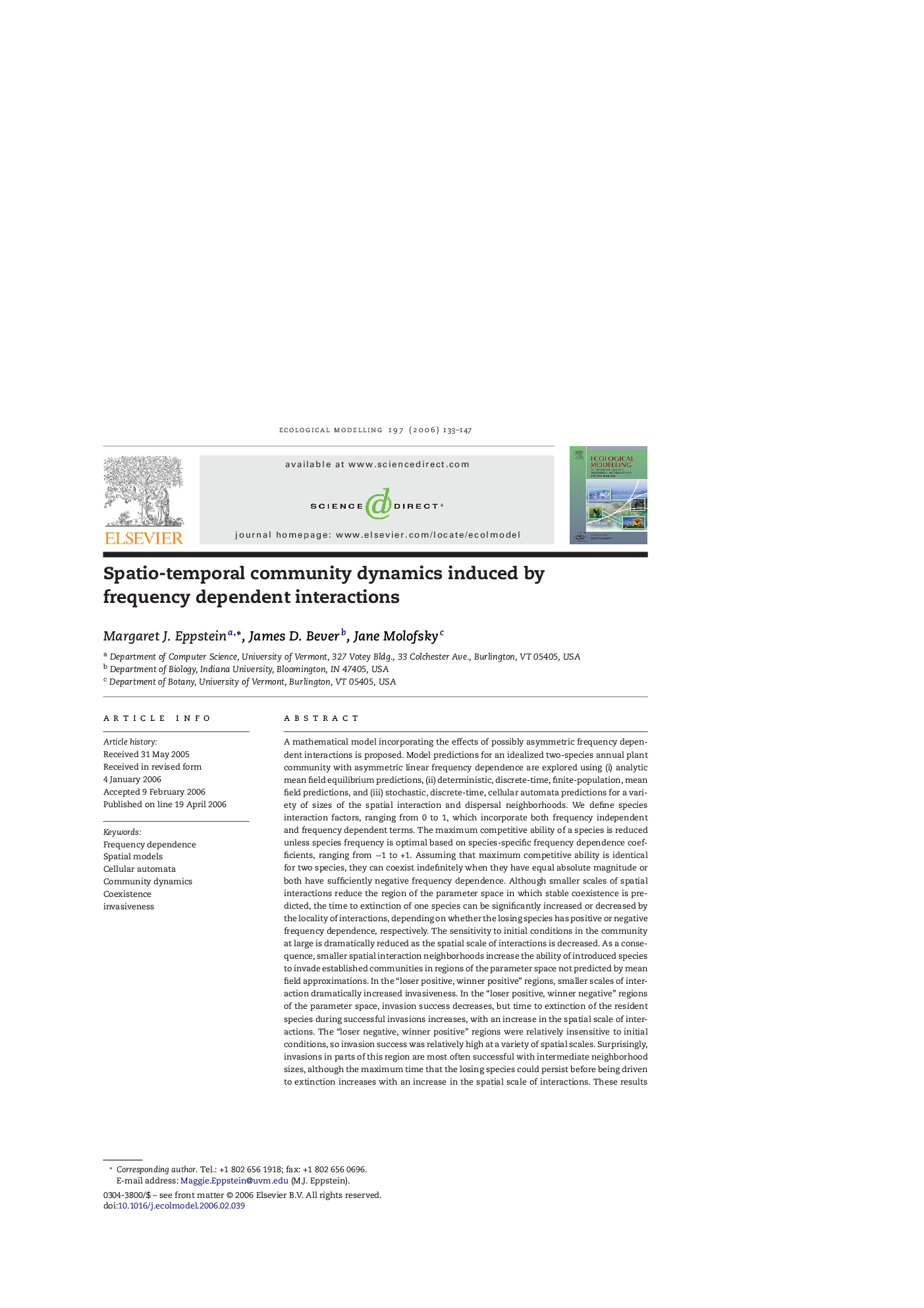| Article ID | Journal | Published Year | Pages | File Type |
|---|---|---|---|---|
| 4378903 | Ecological Modelling | 2006 | 15 Pages |
Abstract
A mathematical model incorporating the effects of possibly asymmetric frequency dependent interactions is proposed. Model predictions for an idealized two-species annual plant community with asymmetric linear frequency dependence are explored using (i) analytic mean field equilibrium predictions, (ii) deterministic, discrete-time, finite-population, mean field predictions, and (iii) stochastic, discrete-time, cellular automata predictions for a variety of sizes of the spatial interaction and dispersal neighborhoods. We define species interaction factors, ranging from 0 to 1, which incorporate both frequency independent and frequency dependent terms. The maximum competitive ability of a species is reduced unless species frequency is optimal based on species-specific frequency dependence coefficients, ranging from â1 to +1. Assuming that maximum competitive ability is identical for two species, they can coexist indefinitely when they have equal absolute magnitude or both have sufficiently negative frequency dependence. Although smaller scales of spatial interactions reduce the region of the parameter space in which stable coexistence is predicted, the time to extinction of one species can be significantly increased or decreased by the locality of interactions, depending on whether the losing species has positive or negative frequency dependence, respectively. The sensitivity to initial conditions in the community at large is dramatically reduced as the spatial scale of interactions is decreased. As a consequence, smaller spatial interaction neighborhoods increase the ability of introduced species to invade established communities in regions of the parameter space not predicted by mean field approximations. In the “loser positive, winner positive” regions, smaller scales of interaction dramatically increased invasiveness. In the “loser positive, winner negative” regions of the parameter space, invasion success decreases, but time to extinction of the resident species during successful invasions increases, with an increase in the spatial scale of interactions. The “loser negative, winner positive” regions were relatively insensitive to initial conditions, so invasion success was relatively high at a variety of spatial scales. Surprisingly, invasions in parts of this region are most often successful with intermediate neighborhood sizes, although the maximum time that the losing species could persist before being driven to extinction increases with an increase in the spatial scale of interactions. These results are explained by understanding cluster formation and density and the relative local inter-specific dynamics in cluster interiors, exteriors, and boundaries. In summary, frequency dependent interactions, and the spatial scale on which these interactions occur, can have a big impact on spatio-temporal community dynamics, with implications regarding species coexistence and invasiveness. The model proposed herein provides a theoretical framework for studying frequency dependent interactions that may shed light on spatio-temporal dynamics in real ecological communities.
Keywords
Related Topics
Life Sciences
Agricultural and Biological Sciences
Ecology, Evolution, Behavior and Systematics
Authors
Margaret J. Eppstein, James D. Bever, Jane Molofsky,
